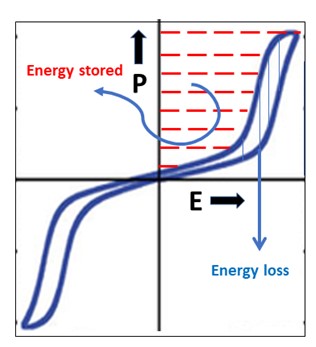Lead free glass-ceramic dielectrics: A highly potential material for energy storage, photonics and memory applications
DOI:
https://doi.org/10.61343/jcm.v1i01.1Keywords:
Anti-ferroelectric glass-ceramics, Dielectric capacitor, Transparent ferroelectric glass-ceramics, Energy Storage Devices, ferroelectric RAM, Photonics, Non-linear optical propertiesAbstract
To maintain a modern livelihood, huge amount of energy is needed which are primarily sourced from fossil fuels that causes global warming and has become an environmental concern. The use of renewable and sustainable green energy has been increasing day by day which needs efficient devices for storage and supply of energy on demand. Among the energy storage devices, batteries have a high energy storage density and low power output, while capacitors possess relatively lower energy density but are capable of exhibiting a high-power output. Dielectric capacitors show high-power density, ultra-fast charge-discharge rates and higher efficiency which make them indispensable for application in electronic devices. Dielectric materials used in the commercially available capacitors are mostly lead based ferroelectric and anti-ferroelectric ceramics. As lead is toxic and causes havoc environmental concerns, the usage of lead/heavy metal containing materials is being gradually phased out and alternate lead-free high-performance materials are sought after. Due to difficulties in ceramic synthesis technique, uncontrolled grain growth and other defects are created resulting in poor dielectric properties. This article tries to present lead-free anti-ferroelectric glass-ceramics based dielectrics as an emerging material for catering to the future green energy demands. Lead free glass-ceramics based dielectrics are multifunctional materials with huge potentials for ferroelectric random access memory (FRAM) and photonic applications, besides their prospects as a future energy storage material.
References
Sakowski-Cowley A. C., Lukaszewicz K., and Megaw H. D., “The Structure of Sodium Niobate at Room Temperature, and the Problem of Reliability in Pseudosymmetrie Structures”, 1969, Acta Cryst. 825- 851.
Muduli R., “Dielectric, Ferroelectric and Impedance Spectroscopic Studies of AgNbO3 and its Modified Systems”, 2016, (Ph. D thesis).
Chakrabarti A., Mollah A. R., “Zirconia assisted crystallization of ferroelectric BaBi2Nb2O9 based glass-ceramics: Kinetics, optical and dielectrical properties”, 2020. Elsevier 0925-8388.
Jing Gao, Lei Zhao, Qing Liu, Xuping Wang, Shujun Zhang, Jing-Feng Li “Antiferroelectric-ferroelectric phase transition in lead-free AgNbO3 ceramics for energy storage applications”, Vol. 101, Issue 12, 2018 5443-5450.
Chakrabarti A., Menon S., Tarafder A., and Molla A. R., “Glass–ceramics: A Potential Material for Energy Storage and Photonic Applications”, In: K Annapurna and A R Molla (ed) “Glasses and Glass-Ceramics: Advanced Processing and Applications” 2022 vol 178 chapter 10, 265-297.
Chakrabarti A., Molla A. R., “Synthesis of Eu2O3 doped BaO-TiO2-GeO2 based glass-ceramics: Crystallization kinetics, optical and electrical properties”, Elsevier 2018 B.V. 0022-3093.
Chauhan A., Patel S., Vaish R., and Chris R. Bowen, “Anti-Ferroelectric Ceramics for High Energy Density Capacitors”, Materials 2015, 8, 8009–8031.
Marghussian V., NANO-GLASSCERAMICS, Processing, Properties, and Applications, Elsevier, Waltham (2015).

Downloads
Published
How to Cite
Issue
Section
License
Copyright (c) 2023 Molla A R

This work is licensed under a Creative Commons Attribution 4.0 International License.
Copyright© by the author(s). Published by journal of Condensed Matter. This is an open access article distributed under the terms of the Creative Commons Attribution (CC BY) license (https://creativecommons.org/licenses/by/4.0/), which permits unrestricted use, distribution, and reproduction in any medium, provided the original author(s) and source are credited.









